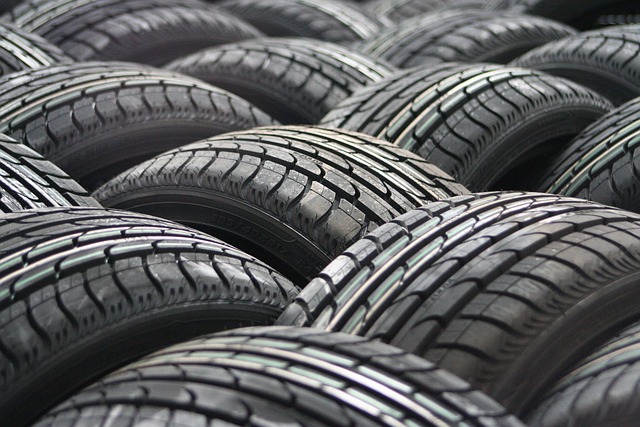Looking to register your car in California? This guide will walk you through the process, ensuring a smooth experience. First, understand the eligibility requirements, gather essential documents like proof of ownership and insurance. Then, visit a DMV office or use their convenient VIN Verifier for accurate vehicle information. Follow the steps to complete registration, pay the necessary fees, and obtain your personalized license plate.
- Understand Eligibility Requirements for Car Registration in California
- Gather Necessary Documents for Registering Your Vehicle
- Visit the DMV: Steps to Register a Car
- Use the DMV's VIN Verifier for Accurate Information
- Complete the Registration Process and Obtain Your Plate
Understand Eligibility Requirements for Car Registration in California

Before registering your car in California, it’s crucial to understand the eligibility requirements set by the Department of Motor Vehicles (DMV). To ensure a smooth registration process, vehicle owners must meet specific criteria. One essential step is to verify the Vehicle Identification Number (VIN) using a reliable method, such as a mobile VIN verifier or a professional inspection. The DMV recommends utilizing services that offer accurate and secure VIN checks to establish the car’s history and identity.
Additionally, the vehicle must be in compliance with all safety standards and emissions regulations set by the state. Owners should ensure their cars pass the required inspections, commonly conducted through specialized centers or mobile VIN inspection services. By fulfilling these requirements, California residents can efficiently register their vehicles and obtain the necessary documents, including a registration certificate and license plates.
Gather Necessary Documents for Registering Your Vehicle

Before heading to the California Department of Motor Vehicles (DMV) to register your vehicle, ensure you have all the required documents in order. This process typically involves several key pieces of information and paperwork. One essential tool for confirming your vehicle’s identity is a reliable VIN verifier, which can be used to retrieve detailed data linked to your car’s unique Vehicle Identification Number (VIN). A mobile VIN verifier offers convenience by allowing you to perform this inspection from the comfort of your own home or even while you’re at the DMV.
Gathering these documents and utilizing a mobile VIN inspection service can help streamline the registration process, making it more efficient. Among the necessary paperwork are items like your vehicle’s title, proof of insurance, and valid identification with a current address. Additionally, you’ll need to provide proof of the vehicle’s odometer reading and any recent emissions test results. These documents work together to verify your ownership and ensure your car meets all legal standards for registration in California.
Visit the DMV: Steps to Register a Car

To begin the process of registering your car in California, visit your nearest Department of Motor Vehicles (DMV) office. The DMV plays a crucial role in ensuring that all vehicles on California roads are properly registered and insured. Once at the DMV, locate the appropriate counter for vehicle registration. An agent will guide you through the steps, which typically include providing essential documents such as proof of ownership, insurance, and identification.
One important step is to get your Vehicle Identification Number (VIN) verified. You can do this with a mobile VIN inspection or by using the DMV’s own services. This process ensures that your vehicle matches the details in the registration records and helps prevent fraud. After all required documents are submitted and verified, you will be issued a California registration certificate for your vehicle.
Use the DMV's VIN Verifier for Accurate Information

When registering your car in California, ensuring the vehicle’s information is accurate is paramount to avoid future legal issues. One reliable tool provided by the Department of Motor Vehicles (DMV) is their VIN Verifier. This service allows you to quickly and easily verify a Vehicle Identification Number (VIN), which is crucial for matching the data on your registration paperwork with the actual car.
Using the DMV’s VIN Verifier is simple. You can access it online or through their mobile app, where you input the VIN of the vehicle. This tool will then cross-reference the details against their database, providing you with a comprehensive report that includes the make, model, year, and other significant specifications. Moreover, for added convenience, there are also mobile vin verifiers available that offer on-the-go inspection capabilities, making it easier to ensure your car’s registration data is error-free before embarking on any journey.
Complete the Registration Process and Obtain Your Plate

After submitting all the necessary documents and fees, it’s time to complete the registration process and obtain your vehicle’s license plate. This involves a final verification step, which can be efficiently completed using a DMV VIN verifier or even a mobile VIN verifier app for convenient, on-the-go inspection. By entering your Vehicle Identification Number (VIN), you can ensure that all the information associated with your car is accurate and up to date.
This verification process is crucial in ensuring that your vehicle meets all legal standards. If any discrepancies are found during this step, including issues with ownership or required modifications, you may need to address them before finalizing the registration. Some mobile VIN inspection tools can help streamline this by providing instant feedback, making it easier for you to resolve any problems promptly and efficiently.
Registering a car in California involves understanding eligibility requirements, gathering essential documents, and visiting the DMV. By accurately verifying vehicle information using the DMV’s VIN verifier, you can ensure a smooth registration process. Following the outlined steps, completing the registration, and obtaining your plate will mark the successful integration of your vehicle into the state’s road network.
